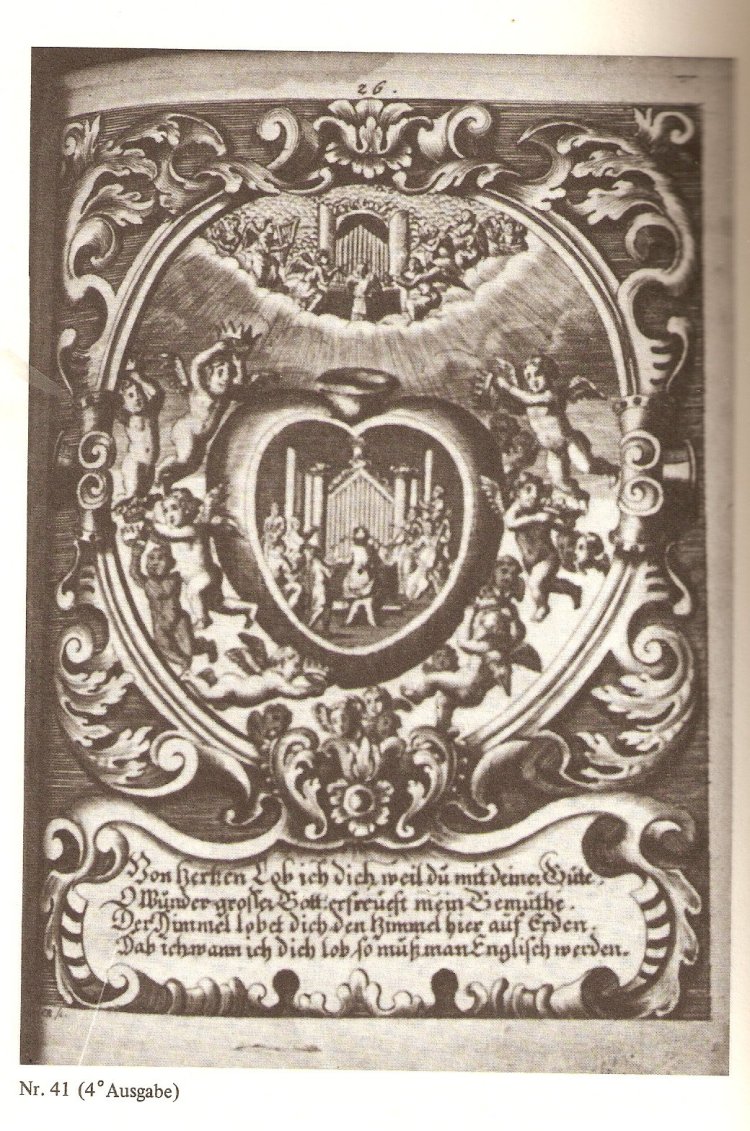|
Cantata BWV 80: Mvt. 4: Aria [Soprano]
Komm in mein Herzenshaus,
Come into my heart's house,
Herr Jesu, mein Verlangen!
Lord Jesus, my desire!
Treib Welt und Satan aus
Drive out the world and Satan
Und lass dein Bild in mir erneuert prangen!
and let you image renewed within me shine in splendour!
Weg, schnöder Sündengraus!
Away, loathsome horror of sin! |
|
Most reviewers of this great Reformation cantata note the profound contrast created by the inward and devotional Soprano aria, No. 4, Komm in mein Herzens Haus.
It is, as often in Bach, a mystical image to which he responds with a wonderfully expressive ritornello and the rapt sense of Jesu, mein Verlangen! is well expressed :"the vocal melody unfolds freely and exp[rssively over
the continuo ritornello theme, which os repeated many times and in varied modified forms". (Dürr)
This mystical image of Jesus coming into the heart is well represented in emblemata - one I recall has a Jesus-figure with a broom cleaning the heart- shaped dwelling! But of interest is that Bach himself had an image of the heart as emblem in the frontispiece to his copy of Heinrich Müller's Himmlischer Liebes-Flamme....only , in this representation, the heart-dwelling is occupied by an organist with attendant consort, and with a heavenly choir above.
The idea is worship in Earth and Heaven; and if this image inspired the librettist, then the heart to which Jesus enters is a musical one..... |


